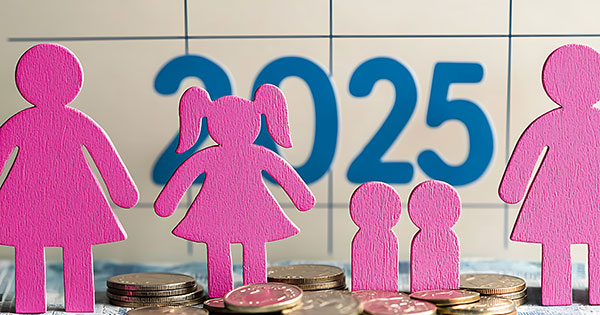As we approach 2025, it’s essential to stay informed about the latest adjustments to retirement plan contribution limits. These changes, driven by cost-of-living adjustments (COLAs), impact various retirement accounts, including IRAs, 401(k)s, and Health Savings Accounts (HSAs). Below is a summary of the key updates for the upcoming year.
Traditional and Roth IRAs The contribution limit for both Traditional and Roth IRAs remains at $7,000, with the catch-up contribution for individuals aged 50 and older staying at $1,000[1].
SEP IRA, Money Purchase, and Profit Sharing Plans The maximum contribution limit for SEP IRAs, Money Purchase, and Profit Sharing plans has increased to $70,000. Additionally, the cap on compensation has risen to $350,000. With the deductible contribution limit remaining at 25%, many participants will be eligible to receive up to a $70,000 contribution[1].
Employee Contribution Maximums (401(k), SIMPLE, 403(b), and 457)
- The SIMPLE IRA maximum salary deferral amount has increased to $16,500, with the catch-up contribution for individuals aged 50 and older remaining at $3,500. For those aged 60 to 63, the catch-up contribution is $5,250[1].
- The 401(k), 403(b), and 457(b) plan maximum salary deferral amount has increased to $23,500, with the catch-up contribution amount remaining at $7,500. For individuals aged 60 to 63, the catch-up contribution is $11,250[1].
Qualified Plan Compensation Limit The maximum amount of an employee’s compensation that can be considered when calculating contributions to a plan has increased to $350,000. For example, if an employer contributes 10% of each employee’s pay to a profit-sharing plan, an employee earning $355,000 would receive a $35,000 contribution (10% of $350,000)[1].
Highly Compensated Employee Determination The highly compensated employee limitation has increased to $160,000[1].
SEP IRA and SIMPLE IRA Employee Eligibility
- The maximum amount of income that an employer can require for employee SEP IRA plan eligibility remains at $750[1].
- The maximum amount of income that an employer can require for employee SIMPLE IRA plan eligibility remains unchanged at $5,000[1].
Defined Benefit Plan Maximum Benefit The limit on the annual benefit under a defined benefit plan has increased to $280,000[1].
Health Savings Accounts (HSAs) The inflation-adjusted indexed numbers for HSAs have increased for 2025:
- Contribution limits: $4,300 for individuals and $8,550 for families.
- Catch-up contribution (age 55+): $1,000.
- Maximum out-of-pocket: $8,300 for individuals and $16,600 for families.
- Maximum deductible: $1,650 for individuals and $3,300 for families[1].
These updates are crucial for effective retirement planning and ensuring compliance with the latest regulations. For specific advice regarding your circumstances, please consult your legal or tax advisor.
References



